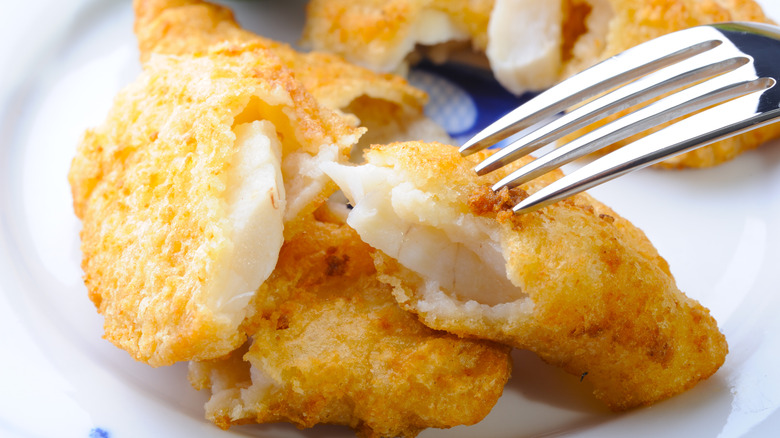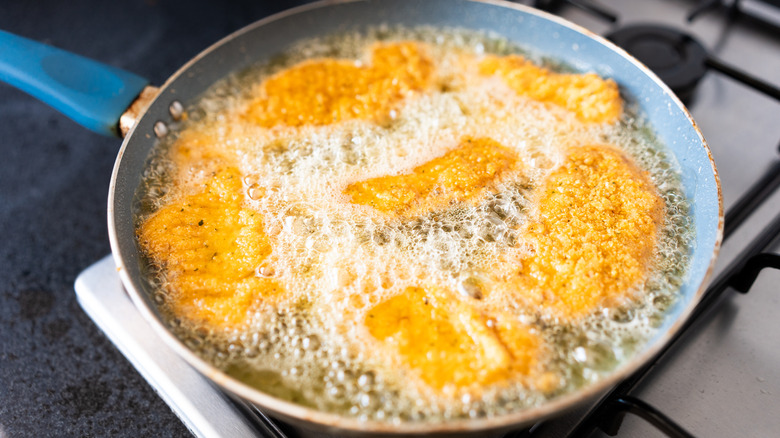The Best Way To Reheat Fried Fish So That It Stays Crispy
Reheating fried foods can be tricky. Whether it's leftover fried chicken or last night's crispy French fries, getting that perfect crunch back is challenging. If you've ever tried reheating fried fish in the microwave, you know it often ends up soggy and rubbery, with the outside too hot and the inside still cold. The microwave's method of heating creates steam, which ruins the texture and can even amplify the fishy taste. Fortunately, using the right method — dry heat — can bring your fried fish back to life.
Ovens, air fryers, and pan-frying are ideal methods for reheating fried fish because they rely on circulating dry heat. Preheat your oven between 275 and 350 degrees Fahrenheit and place the fish on a wire rack over a baking sheet, allowing the air to crisp the fish evenly without drying it out. For the best results, avoid covering the fish with foil, as it can trap steam and ruin the texture. When reheating fried fish in a pan, use a thin layer of oil over medium heat. Gently fry the fish for a few minutes, turning it over once to restore its golden, crispy exterior without overcooking the inside. Though it's a bit more labor-intensive than using the oven, frying fish in oil brings back the crunch and rich flavor that made it delicious in the first place.
The difference between dry heat and moist heat when cooking
Dry heat is essential when it comes to maintaining the texture of fried fish. It works by applying direct, hot air to the surface of the food, which helps to re-crisp the breading without adding excess moisture — this is how air fryers get your food so crispy. Surprisingly, frying is still considered a dry heat method because it uses fat, not water, to transfer heat. The opposite of dry heat is, of course, moist heat, which introduces steam that penetrates the food, softening the crust and making it soggy.
In technical terms, moist heat methods like microwaving heat food by exciting water molecules, which turn them into steam. This process can leave fried fish with a rubbery texture and dull taste. Worse, the moisture can concentrate the natural oils in the fish, amplifying that "fishy" smell and taste that no one enjoys.
By contrast, dry heat methods like frying in oil ensure even heat distribution. The oil surrounds the fish, creating a barrier that keeps moisture from escaping and prevents sogginess. This balance between crisping the outside and gently warming the inside makes frying an effective way to reheat fried fish. Stick to dry heat methods to preserve that golden, crispy crust.

